You can set up exclusivity and startup priority as part of the RMS Configuration settings.
Setting up exclusive relationships between cluster applications
Set exclusive control so that multiple cluster applications will not run concurrently in the same cluster node.
Setting the startup priority of a cluster application
Determine the sequence in which the cluster applications are to be started.
If you omit this setup, the startup sequence of the cluster applications will be undefined.
Note
The startup priority setup function is not supported in this version.
If exclusive relationships for the cluster applications are set up, the cluster applications with exclusive relationships can be prevented from operating simultaneously in one cluster node. An exclusive relationship can be set up only between standby cluster applications. If failover occurs, determine the cluster applications that should continue operating by using the job priority of the cluster applications between which an exclusive relationship is set.
Exclusive control is established between cluster applications within a single group.
Information
To set up an exclusive relationship, create a group of cluster applications between which an exclusive relationship is to be set. Up to 52 groups can be created. Exclusive control is established between cluster applications within a single group.
The cluster application in which the exclusive relationship is set transits to Standby state according to the StandbyTransitions attribute.
Note
If a cluster application is in Faulted state in a node, you cannot start another cluster application with exclusive relationship to the cluster application in Faulted state on the same node.
This is because resources under the Faulted cluster application may not have been stopped.
In this case, clear the Faulted of the application and brings it to Offline. Then, start the cluster application with exclusive relationships.
For how to clear the Faulted state of a cluster application, see "7.2.2.4 Bringing Faulted Cluster Application to Available State."
The operation of cluster applications, between which an exclusive relationship is set up, during failover can be explained in the following two cases:
When the job priorities are different
When the job priorities are the same
The example below explains the exclusive relationship between cluster applications within a single group. Even when there are multiple groups, the operation within a single group is the same.
When the job priorities of the cluster applications with an exclusive relationship are different
Cluster applications with the highest job priority take the top priority for startup on the nodes on which the cluster applications with high job priority are running or on the nodes to which the cluster applications with high job priority are failed over. Therefore, cluster applications running with low priorities will be forcibly exited.
The states indicated in the following figure are as follows:
OPERATING: The cluster application is in the Online state.
STANDBY: The cluster application is in the Standby state.
STOP: The cluster application is in the Offline state.
Failover of the cluster application with a high job priority
If failover occurs in a cluster application with a high job priority, the cluster application with the high job priority will always be in the operating state.

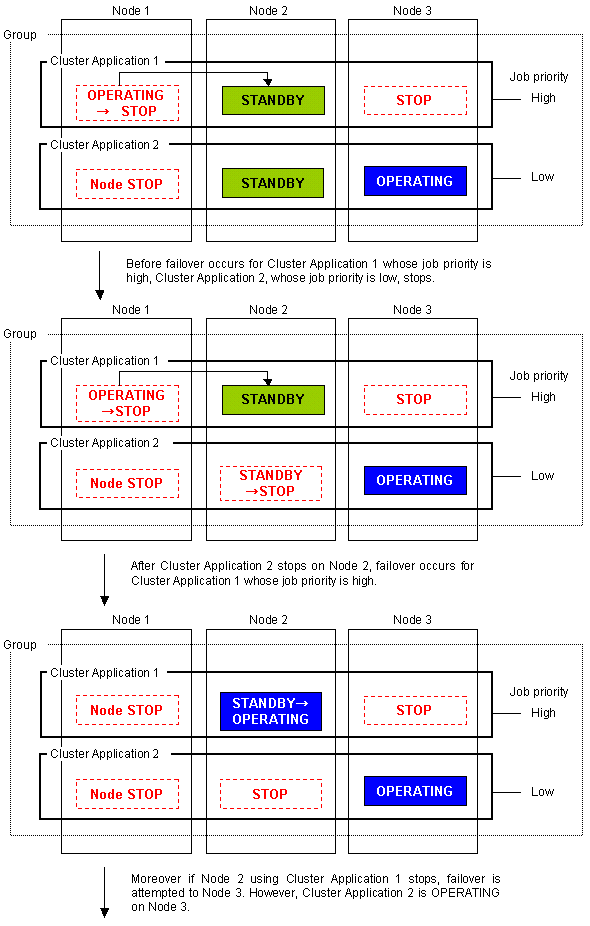
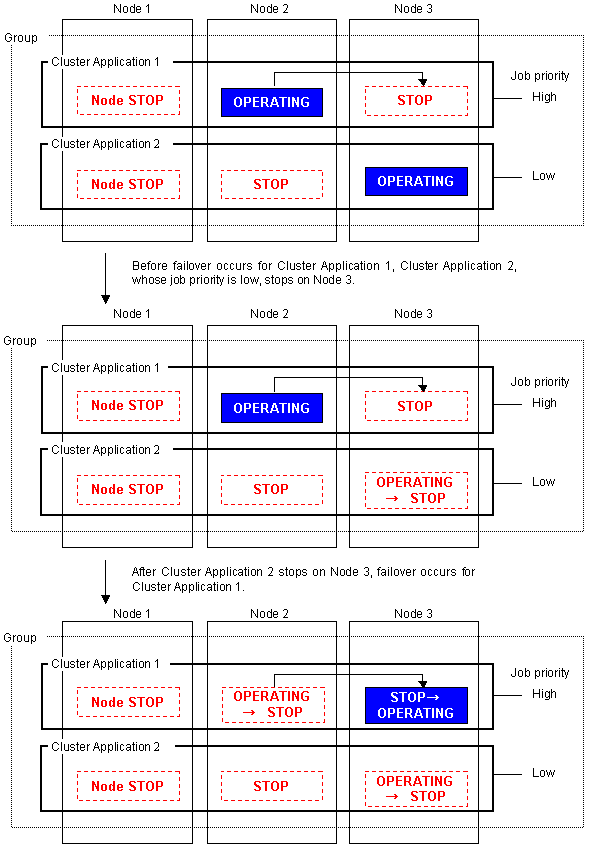
Failover of the cluster application with a low job priority
Failover occurs for a cluster application with a low job priority only when there is no cluster application with a high job priority included on the node to which the cluster application with a low job priority is to be failed over.
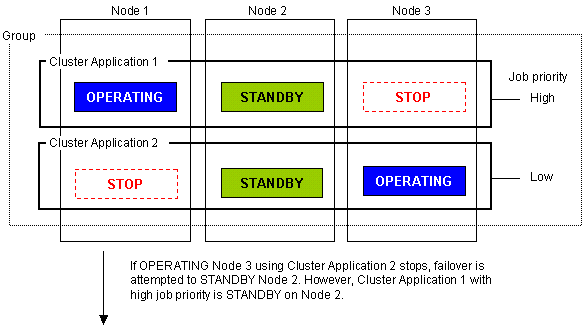
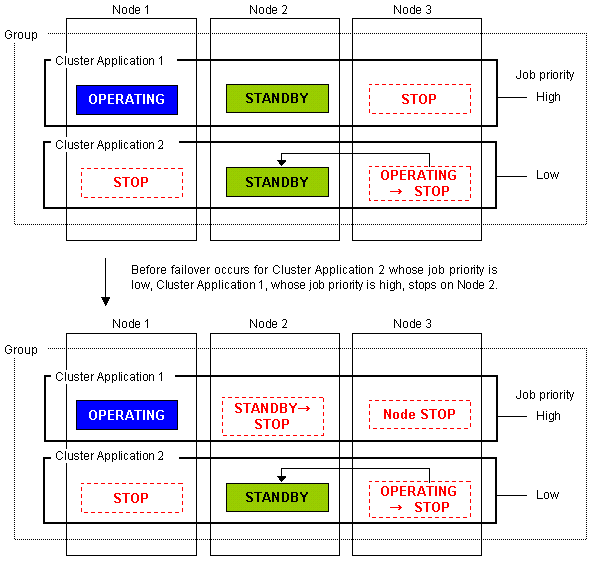
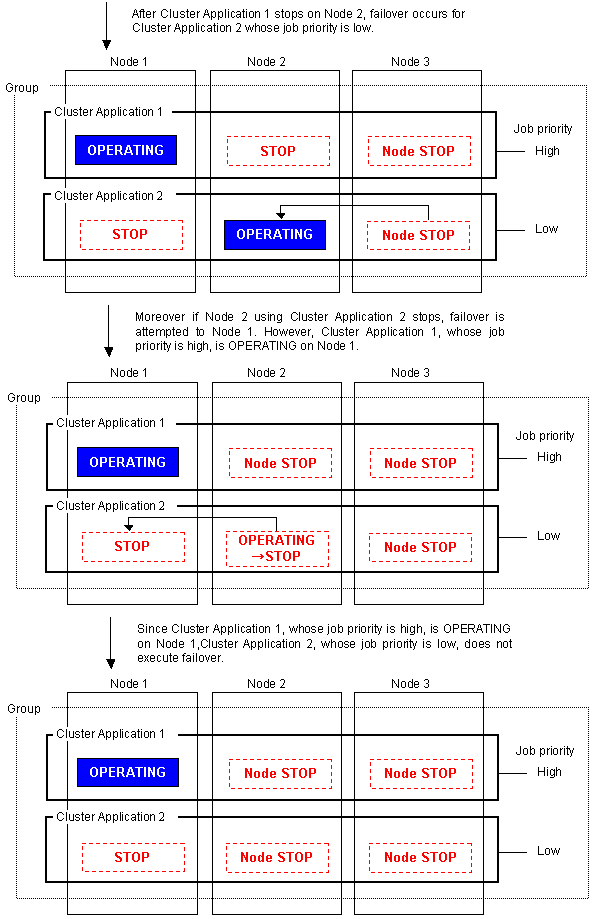
When the job priorities of cluster applications with an exclusive relationship are the same
The operation of the cluster applications that are already running will be continued. On the node on which cluster applications are already running, cluster applications that subsequently start up will be stopped.
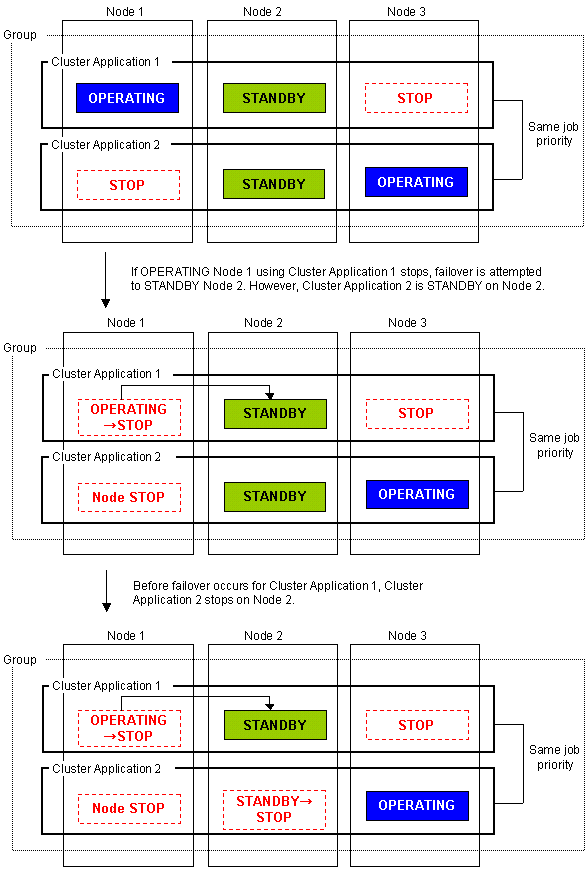
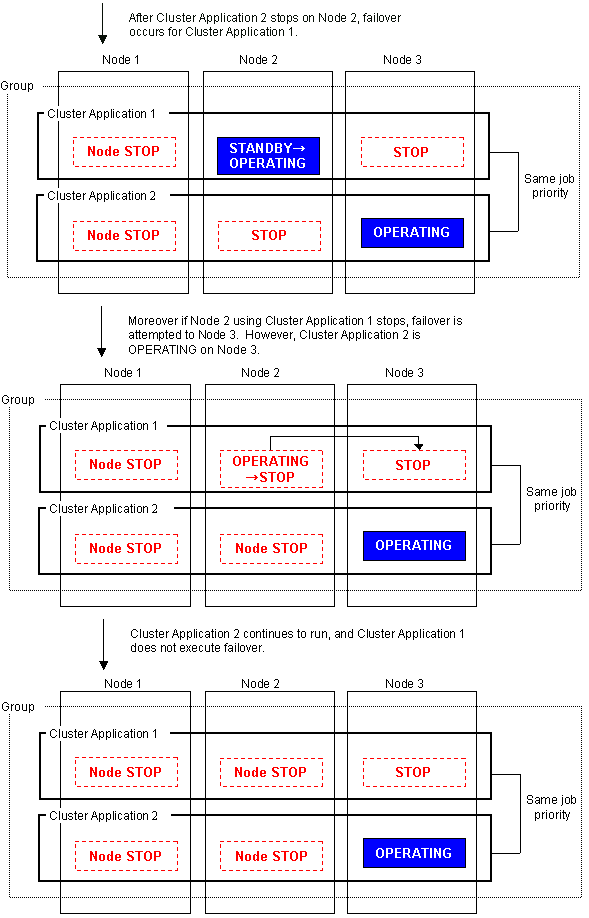
Setting up an exclusive relationship
This section explains how to set up an exclusive relationship.
Figure 6.63 Flow for setting up an exclusive relationship
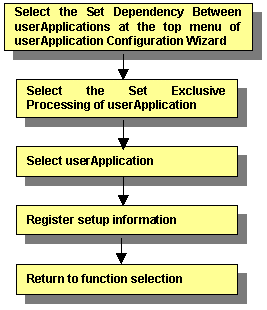
Setting up dependencies between userApplications
From the top menu of the "userApplication Configuration Wizard", select Set up dependency between userApplication.
Figure 6.64 userApplication Configuration Wizard top menu
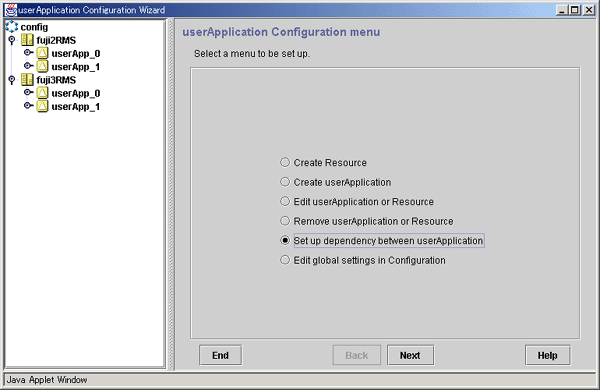
Click Next to go to the "Set up startup priority and exclusivity of userApplication" screen.
Note
The "Set up dependency between userApplication" menu can be selected only when there are two or more standby cluster applications in the cluster system.
Selecting Exclusivity of userApplication
Select Exclusivity of userApplication.
Figure 6.65 Setting up the startup priority and exclusivity of userApplication

Click Next to go to the "Set up exclusivity of userApplication" screen.
Setting up exclusivity between userApplications
Create a group of cluster applications between which an exclusive relationship is to be set and then add cluster applications to the group.
Figure 6.66 Setting up exclusivity between userApplications
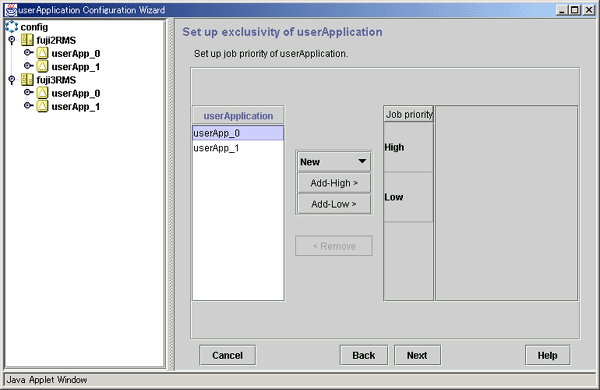

Cluster applications are listed. A cluster application that has already been set up in either a group or a scalable cluster application will not be displayed.
From the list box in the center of the setup screen, select a group for which cluster applications are to be set up. If "New" is specified, a new group will be created. Up to 52 groups of A to Z and a to z can be created.
If a group has not been created, you can select "New" only.
Add the cluster application that you have selected from the userApplication list to the selected group. If you make this addition by using Add-High, the job priority will be set to "high" while, if you make the addition by using Add-Low, the job priority will be set to "low."
Select the addition destination group from the group selection box in advance.
Used to cancel the exclusivity setting made for cluster applications. Select cluster applications within a group, and then click Delete. You can return the cluster applications to the [useApplication] list.
After you have made this setting, click Next to go to the "Registration of the exclusive information on userApplication" screen.
Information
If the job priorities of cluster applications are the same, the same operation will continue even when you add the cluster applications to "High" or "Low."
Confirming the registration information of exclusivity between cluster applications
Confirm the setup information for the exclusive relationship between cluster applications.
Figure 6.67 Registration of the exclusive information on userApplication
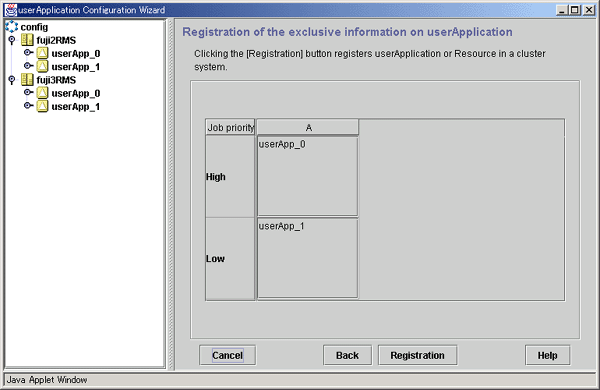
Setup information will be displayed.
After you have completed the registration information, click Registration.